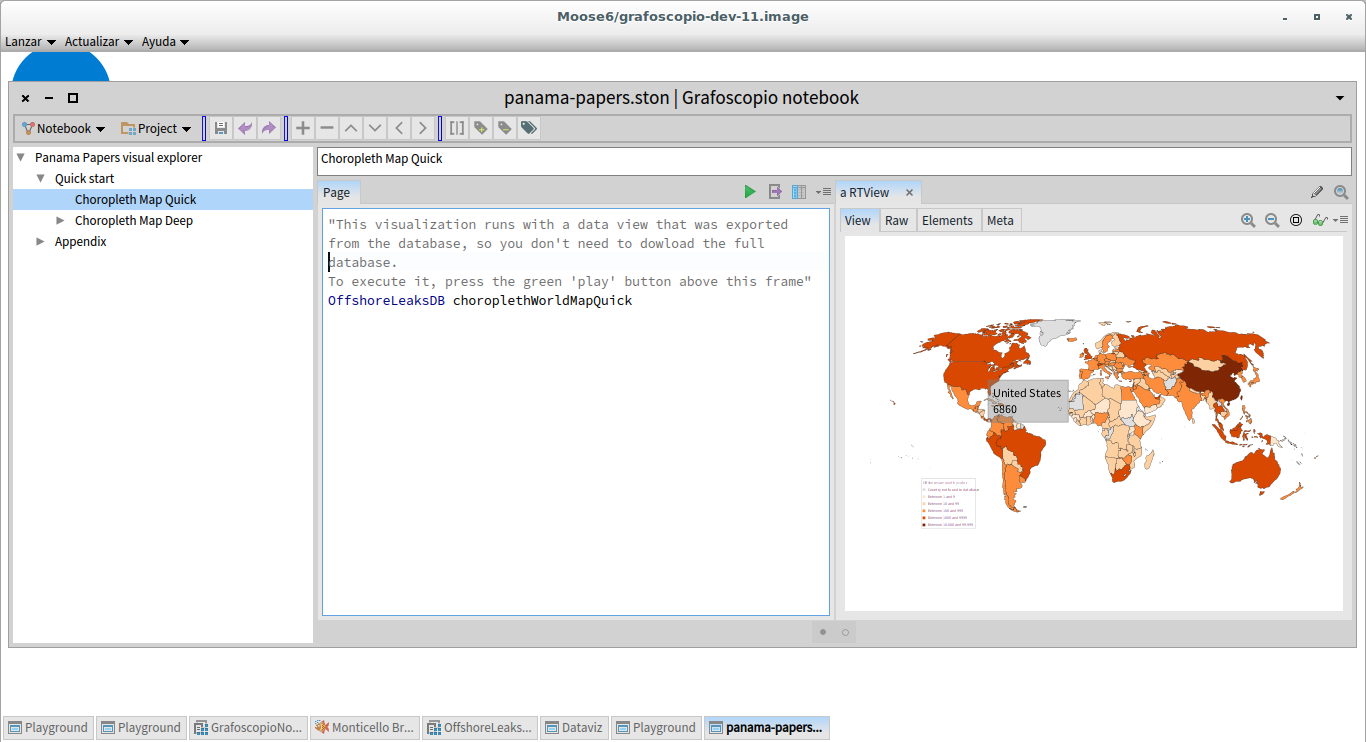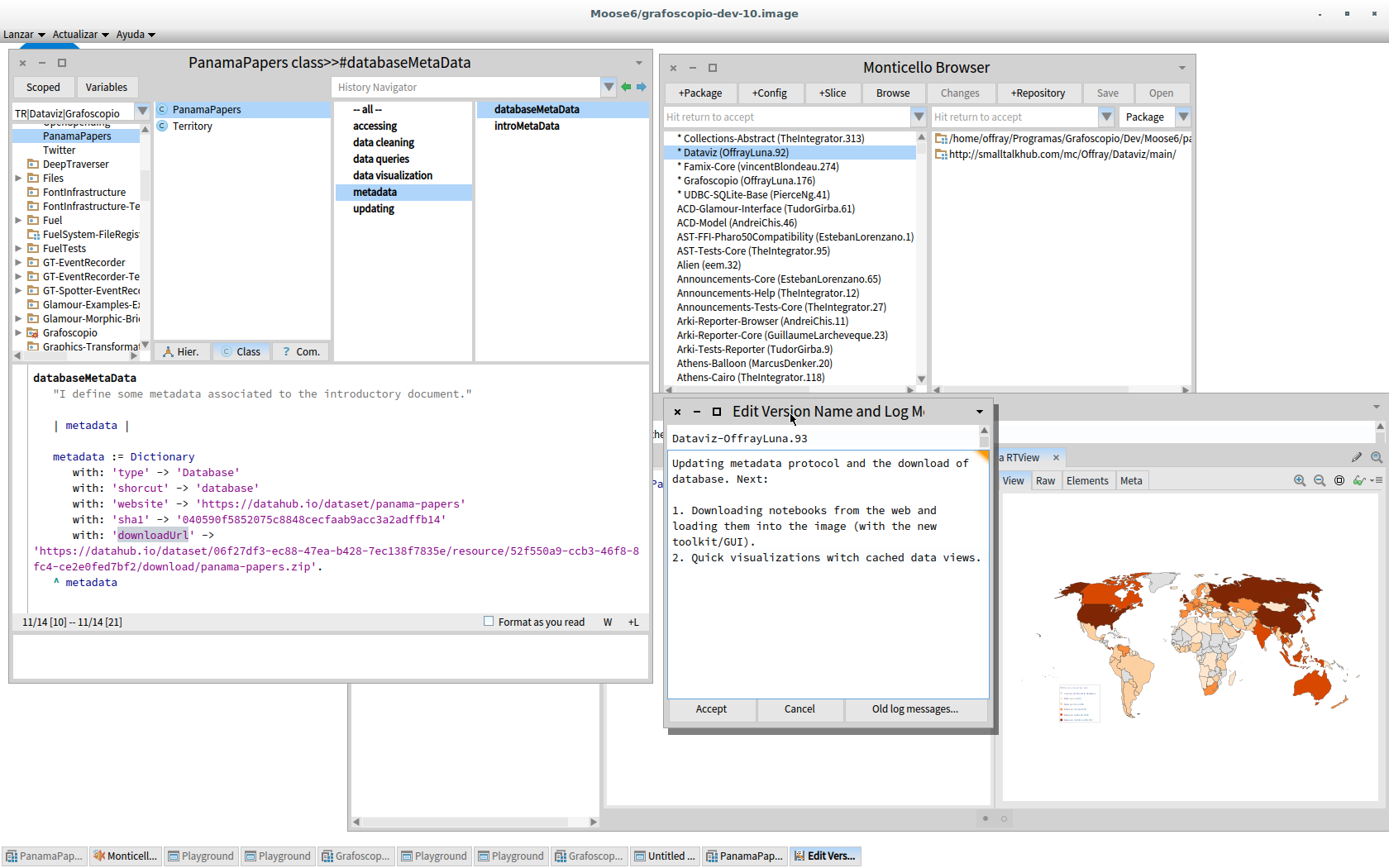Offray / Grafoscopio
Project infos
| License | MIT |
| Tags | documentation, garage science, open research, outlining, notebooks, data activism, citizen science, open science |
| Creation date | 2014-11-02 |
| Website | http://mutabit.com/grafoscopio |
Monticello registration
About Grafoscopio
Overview
Grafoscopio aims to become a tool for interactive documentation, data visualization and reproducible research, that is being used in several subjects: data activism, open science, data journalism, open and community innovation, and others. It is a self contained, portable, multi operative system, desktop "application" (but blurs the line between code, data, docs, visualizations and app) that you can run everywhere: from usb thumb drives, to low end machines or high end servers and anything between. and support More details Please visit Grafoscopio web page in Spanish and Grafoscopio web page in English.
Exploratory computing, interactive documentation and data visualization
Grafoscopio tries to create interactive documents which are modeled as trees. Trees structure the document and provide it with sequence and hierarchy, and allow the authors write in a non-linear fashion. Trees can have basically two kind of tagged nodes: documentation ones (by default or untagged) or code ones (tagged as "code"). Inside documentation nodes you write in pandoc's markdown. Inside code nodes you write in smalltalk and they're executable playgrounds, with code completion, data visualization and inspection capabilities and everything you will expect of a live code environment. This approach brings interactive documentation inside the Pharo image and to output to the external world the tree is traversed and processed according to the tags and document is exported as a markdown document. There you use the pandoc toolkit to produce the desired output, which mostly consist in a one liner command to select your output format.
Tagged nodes have other benefits, for example, you can mark some nodes as invisible, to be ignored by the traverser or extend your tag set to create more finer control over the behavior of the document. They can also work as an ad-hoc emergent language, so you can query the document and use the same tree to address different audiences, while keeping consistency and unity.
Technologies behind
Grafoscopio tries to become an simple, understandable, moldable, versatile and flexible tool thanks to the power of Pharo Smalltalk ecosystem and the combination with mature external and internal frameworks and tools. It uses:
- Internal
- GT Tools and Spec for embeddable Moose playgrounds, GUI and interactive nodes.
- Roassal for data visualization.
- STON for a light data storage and notebooks format.
- Fuel: For medium data storage and objects serialization. -Monticello para la gestión de código fuente.
- External:
- Fossil SCM for collaboration and traceability of the documents history.
- SQLite for storage and management of tabular data.
- Pandoc for exporting to PDF/printing and HTML/web formats.
Quick Install/Launch
Please follow the Installation instructions from the documentation source code repository.


